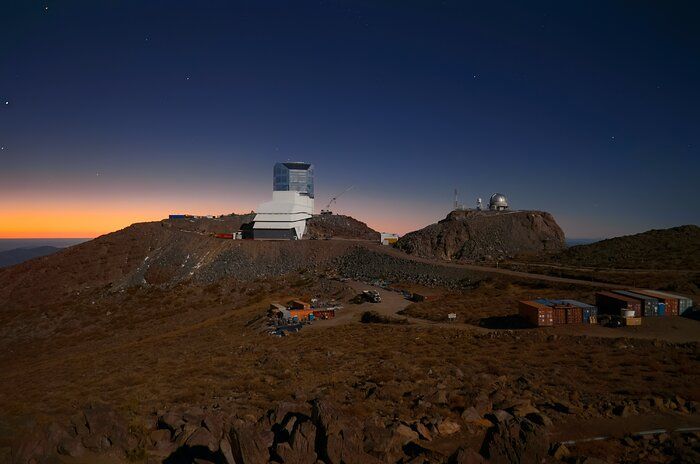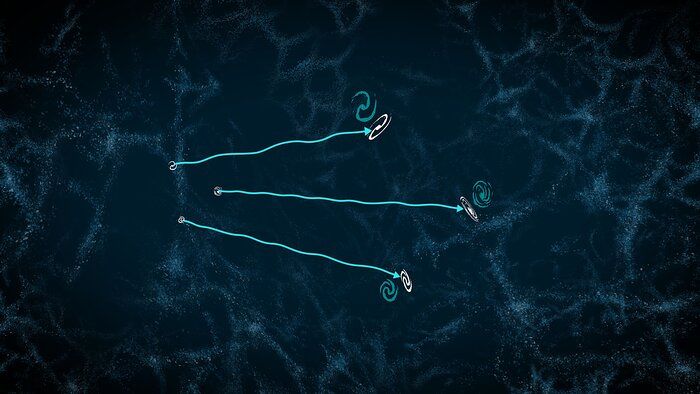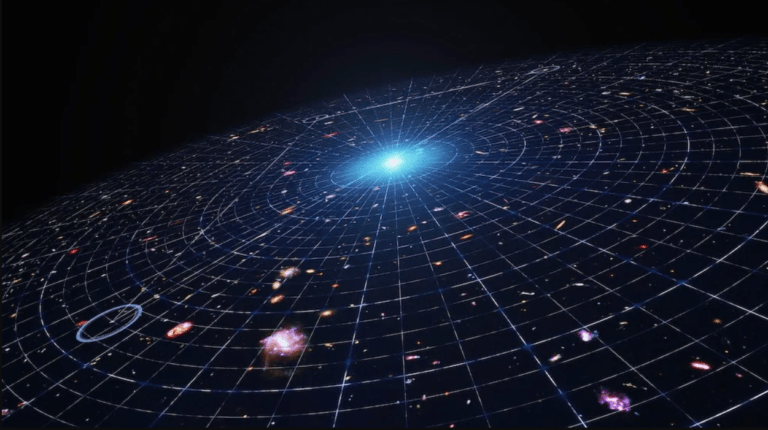The Rubin Observatory may hold the key to unraveling the enigmas of the cosmic unknown
Through its Legacy Survey of Space and Time, the forthcoming observatory aims to construct the most accurate cosmic map in history.
An innovative observatory in the making, poised to create the most intricate map of the universe ever, may also hold the key to resolving two of the most perplexing enigmas in the realm of science: the elusive nature of dark energy and dark matter. Together, these elements constitute what is commonly referred to as the enigmatic “dark universe.”
Nestled on the El Peñón peak of Cerro Pachón mountain in Chile, the Vera C. Rubin Observatory is currently in the stages of development, with operational commencement slated for 2025. Once operational, Rubin will embark on the Legacy Survey of Space and Time (LSST), diligently scrutinizing the entirety of the visible southern sky every few nights over a span of 10 years. On each of these nightly missions, it will capture a staggering 1000 images of the celestial expanse, ushering in an entirely new perspective on the universe and offering profound insights into its evolutionary course.
As it fulfills this pivotal role, Rubin’s expansive field of vision will expose how a network of dark matter distorts the images of remote galaxies, providing scientists with an enhanced means to chart this enigmatic substance. Furthermore, as the vast cosmic web seemingly exerts forces that draw galaxies together while dark energy counters with a push-apart effect, this revelation could unlock the intricacies of this cosmic “tug-of-war.” Consequently, it could shed light on how dark energy and dark matter have interwoven to sculpt the cosmos.
Andrés Alejandro Plazas Malagón, the Rubin operations scientist, expressed in a statement, “Rubin will provide us with a comprehensive array of capabilities. We will be able to measure the characteristics of a significantly larger number of galaxies compared to our current capabilities, empowering us with the statistical strength to employ weak lensing techniques for the dual purpose of mapping the dark matter distribution and examining the temporal evolution of dark energy.”
In what manner Rubin might illuminate the mysteries of the enigmatic cosmos.
Dark matter and dark energy present formidable challenges to researchers due to their essentially invisible nature, despite constituting a staggering 95% of the total energy and matter content of the universe. Specifically, dark matter accounts for 27% of this content, while dark energy comprises a significant 68%. In stark contrast, the tangible constituents, including stars, planets, and all matter that makes up our everyday surroundings, including our bodies, only make up a mere 5% of the cosmic makeup.
The invisibility of dark matter arises from its lack of interaction with light. Therefore, its existence can only be inferred from its gravitational influence on light and the “ordinary” matter that is perceptible to us. Remarkably, these gravitational effects play a pivotal role in maintaining the cohesion of spinning galaxies, a discovery credited to the American astronomer Vera C. Rubin, after whom this groundbreaking new observatory is named. While dark matter internally sustains the integrity of galaxies, these galaxies also congregate on a larger scale, contributing to the overall structural stability of our universe.
Dark energy, on the other hand, operates on a grander scale, propelling the universe’s expansion at an accelerating pace. It exerts a force that thrusts galaxies apart at an ever-increasing rate, all the while interacting with the very fabric of space and time.

Plazas Malagón explained the dynamic interplay between dark matter and dark energy as follows: “Dark matter can be likened to the cosmic architect, endeavoring to construct the universe’s structures, while dark energy serves as the cosmic force seeking to disperse and push these structures apart.”
The influence of dark energy is encapsulated by the cosmological constant, which has been deemed by some scientists as “perhaps the most challenging theoretical prediction in the annals of physics.” This assertion is far from hyperbolic. The theoretical estimate of the cosmological constant, derived from quantum field theory and accounting for all particles in the universe, vastly surpasses the value observed by astronomers during cosmic investigations—by a staggering 120 orders of magnitude.
To put this discrepancy in perspective, it’s akin to measuring a bag of sugar and discovering it weighs one pound when calculations based on individual grains of sugar predict a weight of 10^120 pounds (1 followed by 120 zeroes).
Rubin Observatory may play a pivotal role in achieving a precise determination of the cosmological constant by enhancing our understanding of the hidden, universe-spanning cosmic web of dark matter through gravitational lensing. This phenomenon, initially postulated by Albert Einstein in his 1915 theory of general relativity, suggests that massive objects warp the fabric of the universe. The extent of this warping increases with greater mass, ultimately giving rise to the concept of gravity.

When light traverses one of these spacetime warps, often referred to as “indentations,” its trajectory becomes curved. Consequently, when a massive object resides between Earth and a remote light source, the light emitted from that distant source can follow paths that vary in curvature, depending on their proximity to the intervening mass. Occasionally, these paths lead to the magnification of the source’s light as observed from our vantage point on Earth. This remarkable phenomenon is known as “gravitational lensing.”
Notably, dark matter, despite its enigmatic property of non-interaction with light, possesses mass and thus participates in the bending of light. This effect has been instrumental in deducing that most galaxies are enveloped by a halo of dark matter.
In instances of pronounced spacetime curvature, designated as “strong lensing,” light bending can result in objects appearing multiple times within a single image or causing a background object to appear stretched or distorted. This effect enhances the brightness of light, making it possible to observe distant and faint celestial objects. Nevertheless, there are subtler occurrences of gravitational lensing referred to as “weak lensing,” each holding its own significance.
Theo Shutt, a Ph.D. candidate at Stanford University, elucidated, “If strong lensing is akin to peering through the bottom of a wine glass, weak lensing is akin to gazing through a large window with very subtle deformations.”
Weak lensing can manifest not only at the peripheries of strong lensing phenomena generated by massive entities such as galaxies or star clusters but also as a result of the vast-scale cosmic web of dark matter believed to permeate the cosmos. This engenders subtle distortions in distant galaxies, which are typically imperceptible when viewed individually but become discernible when the cumulative warping effect on several galaxies is taken into account.
To discern weak lensing as a consequence of the universe’s dark matter web, a substantial dataset of galaxies and an overview of the collective distortions across the celestial expanse are essential. This is where the Rubin Observatory comes into play.
Boasting a vast field of vision facilitated by its 8.4-meter telescope, equipped with the world’s most extensive digital camera, the observatory will have the capacity to survey expansive segments of the sky and amass data concerning billions of galaxies and their configurations. In fact, Rubin holds the potential to furnish evidence challenging the appropriateness of dark matter and dark energy as the primary constituents governing the universe’s behavior, thereby implying the necessity for a modified theory of gravity to comprehensively explain the cosmos in its entirety.
Andrés Alejandro Plazas Malagón concluded by emphasizing, “Dark energy aligns with the established principles of gravity under Einstein’s general theory of relativity, but Rubin and the LSST will also enable us to explore alternatives, an immensely exciting prospect.”
This article is republished from SpaceCom under a Creative Commons license. Read the original article.
Do not forget to share your opinion with us to provide you with the best posts !




0 Comments